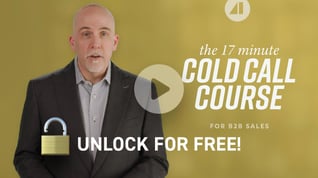Humans tend to get better at things over time. For example, if you were to need surgery, you’d be better off needing it now rather than two decades ago because the techniques, processes, and medical knowledge are better today. Similarly, if you were in need of a car, the car you could buy today would be more comfortable and safer than a car made in the 1970s. In nearly any human endeavor, you will find things are better today. One exception is sales effectiveness.
I am now a sales alarmist. How is it that, while other roles become more effective, sales has regressed over time?
- Why are the average win rates so low in the third decade of the 21st century?
- Why are quota attainment numbers as low as we have ever seen them?
- Why do buyers and decision-makers believe they are better off avoiding a salesperson when making a purchase?
- Why do young people resist taking sales jobs, even when they pay more and come with more autonomy?
- Where did we go wrong and what should we do to turn things around?
Causes of Low Effectiveness
I suspect that there are a number of reasons we see such low sales effectiveness:
- The legacy approach: The legacy approach tries to create relevance and credibility through the company and its solution. This approach minimizes the salesperson, who is a key factor in buying decisions. While the legacy approach may have created value for buyers in the past, it now alienates them.
- The linear sales process: You no doubt have a slide that outlines the opportunity stages of your sales process. A uniform, stepwise sales process promised that every salesperson would increase their win rates and reach their sales goals. In reality, the sales conversation is nonlinear, and forcing the same process on everyone fails buyers and salespeople.
- Failing to differentiate: Salespeople have been taught and trained that their company and solution is what makes them different. This is like Bokanovsky’s process in Brave New World, which he used to create 96 people, each an exact replica of the other, out of one egg. We have commoditized discovery by using the same approach.
- The CRM: The CRM promised that sales leaders and sales managers would reach their goals by having greater visibility into everyone’s pipeline. The CRM also promised greater accountability across the sales force. The problem is that most sales teams prioritize adding new opportunities, so pipelines are full of deals that have never progressed beyond a first meeting.
- Building pipeline: To reach their goals, sales leaders and sales managers build a plan based on ever-growing pipelines to ensure their success. It's difficult to understand how one would believe that losing deals leads to success. Recently, one survey suggested that the average win rate in enterprise-level deals is 17 percent. I suspect that the number is so low because the sales force must produce many more opportunities than they could ever capture. When your win rate is 17 percent, leaders often ask their salespeople to prove they have enough deals in the pipeline to lose 83 percent of them.
- Choosing efficiency over effectiveness: Sales leaders and sales managers are infected with the idea that they need more. The promise of technology is that it will provide efficiency, allowing salespeople to do more (e.g., send more messages to more contacts at more companies). I have yet to meet a decision maker who chooses to buy from a salesperson because they were efficient.
- Hacks and other cheat codes: Salespeople who spend time on LinkedIn will find many potential ways to make things easier or faster. Yesterday it was a fully automated sequence, and today it is artificial intelligence. Tomorrow, it will be something else. That something else will also fail to increase win rates.
- Working from home: Most salespeople in large companies have salespeople working from home and in their territory. It is rare that the sales force is in the same room together. Sales managers are also largely working from home, making it difficult to have conversations, especially when you have half a dozen virtual meetings each day. This makes development more difficult.
As far as I have been able to discern, nothing on this list would cause a decision-maker to buy from the salesperson. If anything, focusing on these factors will make a decision-maker less likely to buy.
There Is Only Effectiveness
A prospective client will buy from the salesperson who created the most value in the sales conversation. Your contacts have no idea what the legacy approach is, but they reject it anyway. Nor do they have any information about your linear sales process. They do, however, believe that one salesperson is the same as another. Your CRM and your overly large pipeline mask the truth about your situation, which is that you have very few real opportunities. Technology has also failed to increase effectiveness, so we must look elsewhere.
The largest variable in winning or losing is the sales conversation. If you are poised to argue that something else—like your solution or your company’s reputation—is going to close the deal for you, I would question why you lose to competitors with similar solutions and company histories. It would also be interesting to compare the conversations of the winning and losing salesperson. It isn’t likely that the solution won the customer over. Instead, it’s more likely that the salesperson failed to create value for their contacts.
Developing a Sales Force
To improve your results in sales, you must start with development that will prepare you to enable the complex, dynamic sales conversation. Sales organizations that want to reach their sales goals and objectives, and increase net new revenue will need to prioritize sales effectiveness.
Most promising tools and shortcuts have failed to produce the results that salespeople and sales organizations need. Instead of looking for an easy button, salespeople looking to pursue growth should seek ways to increase sales effectiveness.
Few will act on this idea, but those who do will have an extreme, sustainable strategic advantage over their competition.









.jpg?width=768&height=994&name=salescall-planner-ebook-v3-1-cover%20(1).jpg)


